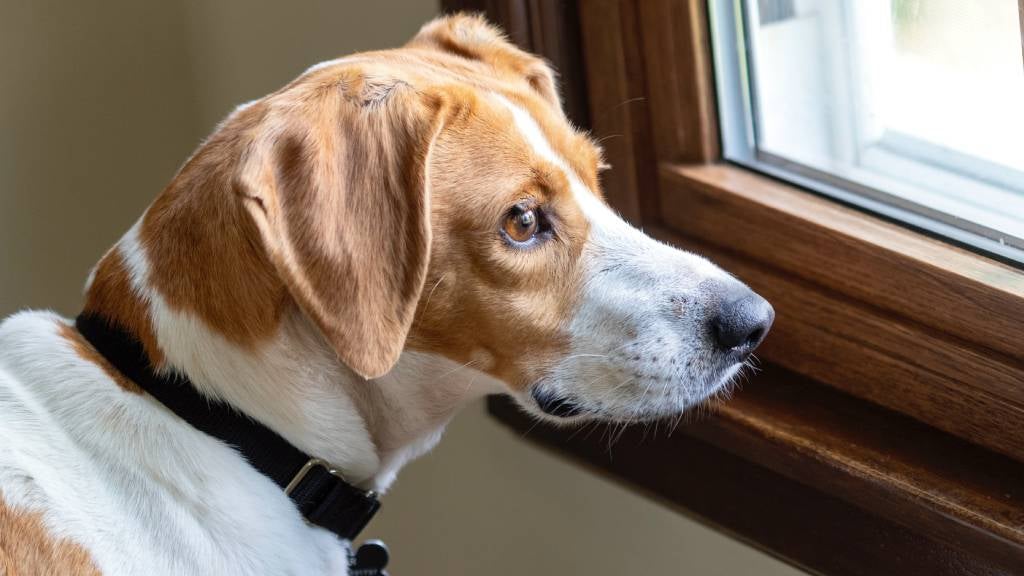Quick take
- Separation anxiety shows up as vocalising, destruction and door-scratching
- Start small – very short absences that build up slowly
- Safe spaces, enrichment and steady routines ease worry
- Reward calm moments – avoid big hellos and goodbyes
- If things stall, a qualified trainer or vet team can help
Understanding separation anxiety in dogs
Separation anxiety is more than a little whimpering – it is a stress response when a dog is left alone or away from their person. Signs can include barking or howling, chewing doors or frames, indoor accidents, pacing, drooling or attempts to escape. Early, calm training helps most dogs learn that solo time is safe.
Common causes of separation anxiety
- Early life experiences – limited alone-time practice as a pup
- Routine changes – moving house, new work hours, a new family member
- Lack of gradual independence training – dogs need a stepwise path to solo time
- Individual temperament – some dogs are simply more sensitive
How to help your dog stay calm
1. Create a safe space
- Use a comfy crate or a dog-proofed room with bed, water and a chew
- Add gentle background sound to mask outside noises
- Keep valuables and tempting chewables out of reach
2. Practise very short absences
- Start with seconds, not minutes – leave the room, return while your dog is calm
- Build duration slowly across days and weeks
- Keep departures and arrivals low key – no big fuss
3. Add exercise and enrichment
- A settled dog copes better – schedule a walk, training game or sniffy session before alone time
- Use food puzzles or safe long-lasting chews for quiet occupation
4. Set a steady routine
- Feed, walk and rest at predictable times
- Include daily “settle on a mat” practice so relaxing becomes a skill
5. Desensitisation and counter-conditioning
- Break down departure cues – pick up keys, sit down again, repeat until boring
- Pair alone time with something positive – a special chew saved only for departures
6. Consider professional support
- A qualified trainer or behaviour professional can tailor a plan
- Your vet can rule out medical issues and discuss calming options if needed
Tips for multi-dog households
- Give each dog their own rest zone and enrichment so anxiety is not contagious
- Practise short solo absences for each dog – confidence is individual
- Avoid all-at-once departures until both dogs are coping well
Final thoughts
Progress comes from tiny steps repeated often. Keep sessions short, celebrate calm moments and dial things back if your dog wobbles. With patience and a simple plan, most pups learn that quiet time at home is no big deal.
Give calm days a nudge with Buddy
Training takes time – and you’re doing the work. While you focus on routines, chews and chill time, Buddy Pet Insurance can help add an extra layer of confidence and keep you feeling calm as you work on building your dog’s confidence.
FAQsFrequently Asked Questions about separation anxiety in dogs
Home alone practice can feel tricky – here are quick answers to the big questions.
How do I tell stress from true separation anxiety?
Look for a pattern: issues that happen only when you are gone or getting ready to leave suggest separation distress rather than general mischief.
How long should I leave my dog when starting out?
Begin with seconds. End sessions while your dog is calm, then add tiny increments. Rushing the timeline is the fastest way to stall progress.
Will a second dog fix separation anxiety?
Not usually. Many anxious dogs are attached to their person, not just lonely. Train independence first – then consider a companion if it suits your life.
Do calming chews or jackets help?
They can take the edge off for some dogs but work best alongside training and routine.
Is crate training helpful for separation anxiety?
It can be if your dog enjoys the crate. Build a positive association first – a crate should feel like a safe den, not confinement.
20 Nov 2025

